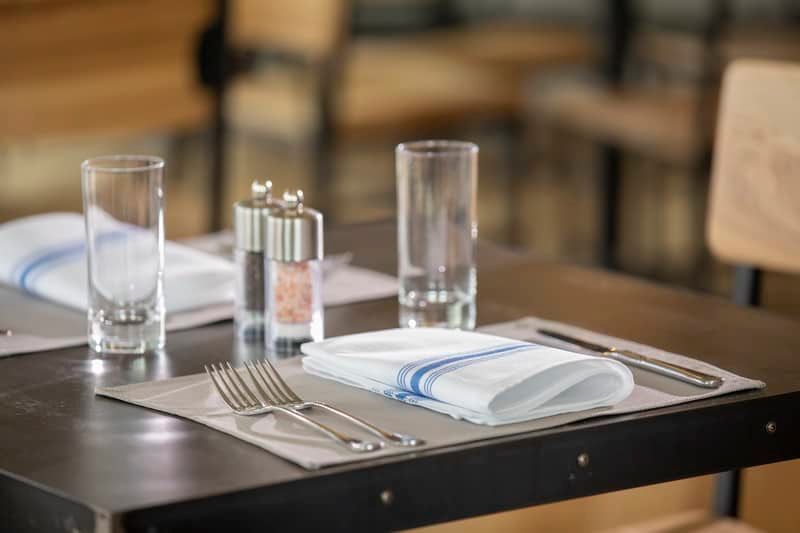
We recently published a post “inspired by a Vox article” discussing noisy restaurants and how table linens might be used to help address the problem. It was not long after seeing the Vox article that we ran across another article, this one from the Washington Post. It discussed noisy restaurants from the perspectives of those protected under the Americans with Disabilities Act (ADA).
The ADA protects those living with disabilities by requiring anyone operating a public space to accommodate their needs. The Washington Post article, written by contributor Joyce Cohen, examined whether or not noisy dining rooms are a violation of the ADA when applied to people with hearing disabilities.
In light of our previous blog post, we think the Washington Post article warrants further discussion. It could be that bringing back linen tablecloths, place mats and napkins could actually be beneficial to guests with impaired hearing. It could also be helpful to guests who might have sensory issues. A restaurant linen service can keep these table linens clean and ready to use.
Too Loud to Hear Anything
Cohen began her piece by describing a situation that occurs all too often in the U.S. An extended family decided to get together and enjoy a good meal at a local restaurant. One of the family members suffered from a hearing impairment. The family asked for a quieter table in an outdoor seating area but were denied because only one server was on duty.
They were placed at what was supposed to be a quieter table inside the restaurant only to discover that a speaker overhead blared music loudly enough to interrupt normal conversation. The guest with the hearing impairment could not hear anything, causing anger and anxiety among the rest of her family. Needless to say, it was not a pleasant experience.
Cohen pointed out in her piece that decibel levels in U.S. restaurants are often measured in the 80s. Science has determined that noise at 70 dB or above is the point at which people must shout at one another to be heard. These sorts of levels can be damaging to hearing.
What the Law Says
The ADA says a lot about accommodating the disabled in public spaces. It talks about wheelchair ramps, wheelchair lifts, the width of doorways and aisles, accessible restrooms and more. It says very little about noise levels. As such, there are many questions about whether noisy restaurants are in violation of the ADA.
But even if a court ruled that restaurants did not have to keep the volume down or provide quiet places for those with hearing impairments, it seems like doing so is still the right thing to do. Why would a restaurant want to alienate disabled patrons?
A Reminder About Table Linens
We discussed how table linens can help address a noisy restaurant environment in our previous post. It is time for a reminder. Linen tablecloths, place mats and napkins absorb sound quite nicely. By contrast, uncovered tables tend to reflect sound in all directions. Linen services can provide regular deliveries of all the products you need.
The right table linens can make a noisy environment considerably less noisy. They can be especially helpful in facilitating conversations between guests at the same table. We would encourage you to seriously consider adding table linens to your restaurant. If you need help keeping your linens clean, consider a linen cleaning service.
In closing, also consider that the noise problem is not limited only to people with hearing impairment. Other people suffer with disabilities involving sensory issues. For them, noisy restaurants can be completely overwhelming. They would be helped by high-quality table linens as well.
